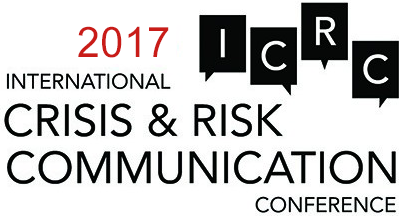
Associate Professor
University of South Florida
United States
Mariaelena Bartesaghi is an associate professor in the department of communication at the University of South Florida. She received her doctorate in Communication from the Annenberg School for Communication, University of Pennsylvania. She adopts social construction as a metatheoretical tool with which to interrogate how institutions are materialized or (en)acted in discourse. As a language and social interaction scholar, she uses discourse analysis, which is doing critical work “from the inside out.” Her social critique emerges from an examination of the communication dynamics at hand, from transcripts and documents collected from fieldwork. Her work has analyzed institutional power in health settings, education, and the dynamics of crisis communication. In 2005, Dr Bartesaghi was awarded the National Communication Association (NCA), Language and Social Interaction Division Top Dissertation Award. In 2012, she received the Department Faculty Recognition Award, the Florida Communication Association Best Teacher Award, and NCA’s award Teachers on Teaching. Her recent publications include a special issue on social construction, Hurricane Katrina and the metadiscourse of disasters, and (re)defining the concept of risk.
2014
Breakout Session: Coordination: From Crisis “C-Shibboleth” to in the Moment Communicative Action
In post facto accounts of what went wrong with Hurricane Katrina, the media, public discourse, and scholarly research underscored the importance of disaster response and crisis management. Criticism of the governmental response to the hurricane and its devastating aftermath, for example, attributed the problems associated with the response to a “lack of coordination” and “poor decision making.” Though coherent with the vocabulary of response and management of disaster, these terms themselves derive elements of from particular frameworks of how crisis is communicated interpreted, reacted to, and managed. This presentation focuses on the term coordination in terms of communicative dynamic and human element. As a communication scholar who focuses on the consequentiality discourse at the micro (interaction) and macro (social order) level, Bartesaghi deconstructs its status as a “c-shibboleth” of crisis planning (Clarke, 1999) and the empirically and theoretically unproblematic assumption that “tight coordination among organizations, clear communication among people who need information and cooperation among individuals and organizations will make disaster response more productive “(Clarke, 1999, p. 56). Instead, Bartesaghi analyzes talk and textual data from Hurricane Katrina to adduce how coordination works as crisis metadiscourse, in three social contexts: as post facto account, as semantic shell for public and scholarly discourse alike and as pragmatic term in conversations during crisis.
To do so, Bartesaghi avails herself of over ten hours of recorded and transcribed teleconference calls between local, state, and federal officials that took place during August 26-28, 2005, research articles and news stories. These calls are an important part of the response that produced or failed to produce decisions and actions in response to the approaching hurricane. Discourse analysis of the data allows the crisis response processes to be made visible as sequences and exchanges in talk in interaction. Furthermore, this analysis of the conference calls brings into question crisis frameworks currently popular in public choice and industrial psychology, and supports a communication approach to crisis as a dynamic of language and social interaction (c.f. Fitch & Sanders, 2005),
Bartesaghi notes that while they might serve important social functions, as for example, place accountability and allow for grieving, the post-facto accounting phrase “lack of coordination” does nothing to reveal how the process of producing decisions and coordination actually occurs as a moment to moment dynamic of human communication (Bartesaghi & Castor, 2010). Her analysis of news stories reveals how, as a semantic shell, coordination gives the appearance, but only that, of describing an actual process, while in fact pinpointing very little. Finally, her analysis of excerpts from the phone calls offers some interesting insights of how invocation of the term works pragmatically, that is, to metacommunicate allegiances among participants with respect to a pre-determined plan of action at moments in the exchange when some speakers indicated to want to do something different; conversely, “coordination” served the purpose of calling those speakers back into “the fold,” reminding them to “act jointly” and “speak with one voice” – another presupposition that has, recently, come under scrutiny.
The presentation thus challenges some of the current wisdom on crisis communication, showing the usefulness of microanalysis to advance recommendations for crisis planning and response.


